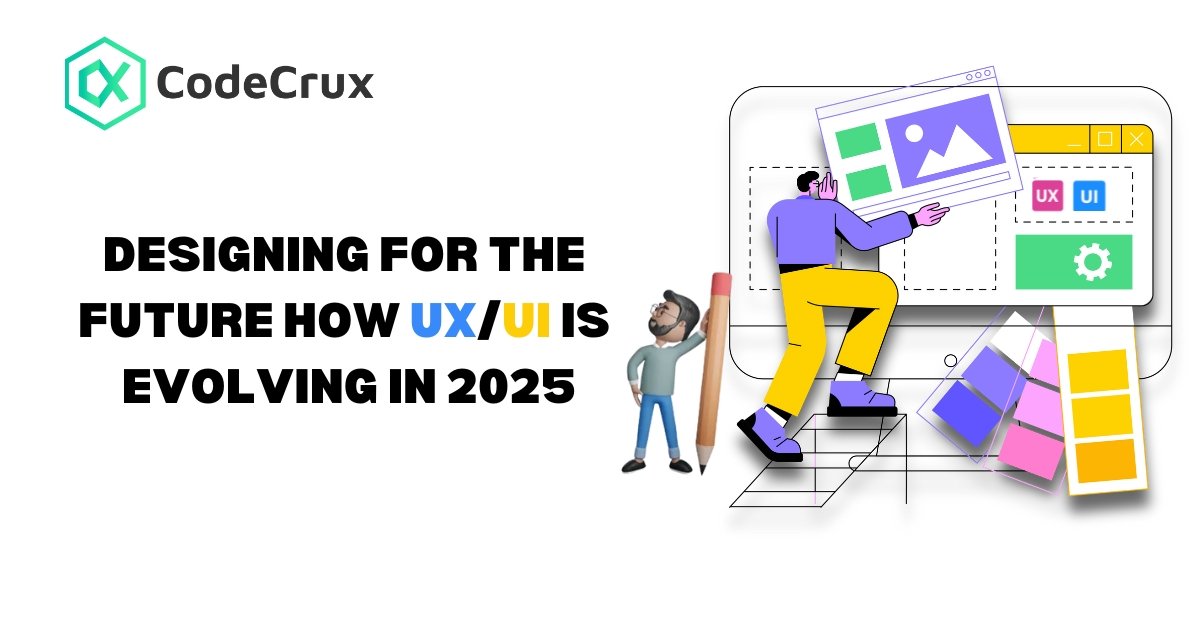Designing for the Future How UI/UX is Evolving in 2025

Introduction
As digital experiences continue to shape how we interact with the world, UI/UX design is undergoing a transformative shift in 2025. With advancements in artificial intelligence, augmented reality, and personalization, user experiences are becoming more intuitive, seamless, and engaging. This article explores the key trends shaping UI/UX design in 2025 and how businesses and designers can adapt to these changes.
1. AI-Driven Personalization
Artificial Intelligence (AI) and Machine Learning (ML) are playing a pivotal role in personalizing user experiences. In 2025, UI/UX design goes beyond static layouts and fixed navigation paths. AI-driven design adapts dynamically based on user preferences, behavior, and real-time interactions.
-
Hyper-Personalization: AI analyzes user data to tailor interfaces, colors, content, and layouts based on individual preferences.
-
Predictive UX: Anticipating user needs before they act, reducing friction in digital interactions.
-
Conversational Interfaces: AI chatbots and voice UI that provide human-like interactions, enhancing accessibility and usability.
2. Immersive Experiences with AR & VR
Augmented Reality (AR) and Virtual Reality (VR) are redefining user interfaces, making digital experiences more immersive. From retail and real estate to education and gaming, AR and VR are enhancing engagement in ways never seen before.
-
Mixed Reality (MR) Interfaces: Seamless integration of digital elements with real-world environments.
-
Holographic UI: Gesture-based controls allowing users to interact with interfaces in three-dimensional space.
-
Immersive E-Commerce: Virtual try-ons, 3D product previews, and interactive storytelling are reshaping online shopping.
3. Minimalist and Inclusive Design
Simplicity remains at the core of UI/UX evolution. However, in 2025, minimalism is not just about aesthetics—it’s about function and accessibility.
-
Dark Mode & Adaptive UI: Interfaces that adjust based on environmental conditions and user preferences.
-
Neumorphism & Soft UI: A blend of skeuomorphism and flat design to create intuitive yet aesthetically pleasing experiences.
-
Accessibility-First Design: WCAG (Web Content Accessibility Guidelines) compliance is a priority, ensuring digital platforms are usable for everyone, including those with disabilities.
4. Gesture-Based and Voice UI
Touch interfaces are evolving as more devices incorporate gesture-based and voice-controlled interactions. The growing adoption of smart home devices and wearable technology is pushing UI/UX beyond screens.
-
Voice Navigation: AI-powered voice assistants integrated with applications for hands-free interaction.
-
Gesture Recognition: Eliminating the need for physical touch, improving hygiene and usability in healthcare and public spaces.
-
Eye-Tracking Interfaces: Enhancing accessibility by allowing users to navigate applications using eye movement.
5. Sustainable and Ethical Design
Sustainability and ethics are at the forefront of UI/UX decision-making in 2025. Designers are focusing on reducing digital carbon footprints and promoting responsible design practices.
-
Eco-Friendly Interfaces: Optimizing website and app performance to reduce energy consumption.
-
Ethical AI in Design: Ensuring AI-driven personalization respects user privacy and data security.
-
Inclusive Representation: Designing for diverse audiences to reflect different cultures, languages, and abilities.
6. Micro-Interactions and Emotional Design
Micro-interactions—small animations and responses that provide feedback—are becoming more sophisticated. Emotional design, which focuses on creating positive emotional responses, is a key trend.
-
Micro-Animations: Enhancing usability by guiding users through subtle visual cues.
-
Haptic Feedback: Providing a tactile response to touch interactions.
-
Human-Centered Design: Incorporating elements that evoke emotions, increasing user engagement and retention.
Conclusion
UI/UX design in 2025 is all about personalization, immersion, accessibility, and ethical design. As technology advances, designers must stay ahead by embracing AI, AR, VR, voice UI, and sustainable practices. By focusing on user-centric, data-driven, and responsible design strategies, businesses can create future-ready digital experiences that captivate and retain users.